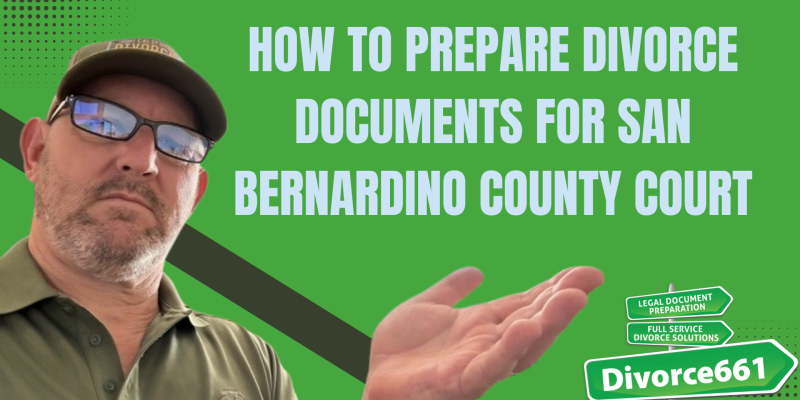🛑 What to Do If Your Divorce Papers Are Rejected in San Bernardino County? | San Bernardino Divorce
Hi, I’m Tim Blankenship with Divorce661. If your San Bernardino divorce papers were rejected, you’re not alone—and most rejections are fixable. In this post I’ll walk you through why courts reject filings, share a real-life example from our practice, give a step-by-step plan to get your case back on track, and explain how Divorce661 helps clients avoid costly delays.
Why San Bernardino Courts Reject Divorce Papers
San Bernardino County has strict filing standards. Even a tiny mistake can derail your divorce process. Common reasons for rejection include:
- Missing or incomplete forms — Every required document and attachment must be submitted.
- Incorrect legal wording — Judgments and property division language must be precise.
- Skipped financial disclosures — Disclosure forms are critical and often required before a judgment will be approved.
- Formatting or checkbox errors — Unchecked boxes, incorrect signatures, or bad formatting can cause a clerk to reject the packet.
“Even a tiny mistake can derail your divorce process in San Bernardino.”
Real Case Example
We recently helped a client whose judgment was rejected twice. The rejections stemmed from two issues: missing financial disclosures and incorrect language used in the property division section of the judgment. The client was frustrated—but once we identified the issues, corrected the paperwork, and resubmitted everything properly, the court approved the divorce within a few weeks.
Step-by-Step: What to Do If Your Divorce Papers Are Rejected
- Read the rejection notice carefully. The court’s rejection notice will usually explain what’s missing or incorrect. Use it as a checklist.
- Identify missing disclosures or forms. Financial disclosures and any attachments referenced by the judgment are frequently required. Make sure every referenced form is included and complete.
- Correct legal language. If the clerk flags wording in the judgment or decree, revise the language to mirror required templates or statutory phrasing. Precision matters.
- Double-check every box and signature. Go page-by-page to ensure checkboxes are marked where required and signatures/dates are present.
- Fix formatting issues. Confirm margins, page numbers, and document order meet local court standards. Even small format errors can trigger a reject.
- Resubmit promptly. Correct and resubmit the packet quickly to avoid additional delays.
- Keep copies and a cover letter. When resubmitting, include a brief cover letter that explains the corrections you made and reference the court’s rejection item list.
Common Paperwork Mistakes to Watch For
- Forgetting to include mandatory financial declarations (income, expenses, assets, debts)
- Using nonstandard or unclear language in property division and judgment entries
- Leaving checkboxes blank or marking inconsistent options
- Missing signatures, initials, or notary where required
- Failing to attach exhibits or schedules referenced in the main forms
How Divorce661 Helps
At Divorce661 we specialize in fixing rejected divorce paperwork in San Bernardino County. Our process includes:
- Full review of your court packet to identify every issue
- Correction of forms, precise edits to judgment language, and completion of missing disclosures
- Proper reformatting and reassembly of documents to meet court standards
- Resubmission of the corrected packet and follow-up until the court accepts the case
We operate on clear, flat-fee pricing and focus on minimizing delays and stress. Our goal is to get your case accepted the first time after correction so you can move forward.
Conclusion and Next Steps
If your filing was rejected, don’t panic. Most rejections are routine and fixable by addressing the items the court flagged. Pay close attention to financial disclosures, legal wording in judgments, and simple checkbox/signature requirements—these are the most common pitfalls in San Bernardino.
If you’d like help getting your case back on track, schedule a free consultation with us at Divorce661. We’ll review your paperwork, correct the issues, and handle the resubmission so you can focus on moving forward.
Schedule a free consultation: https://www.divorce661.com










